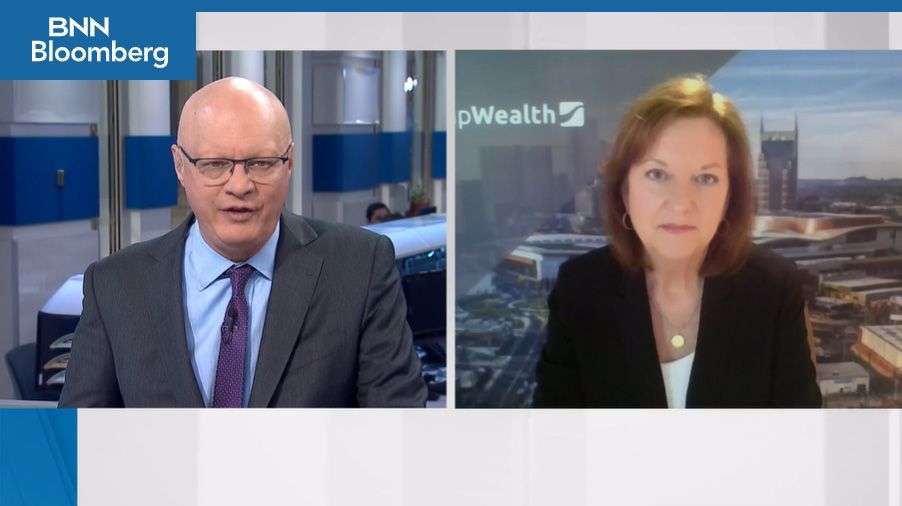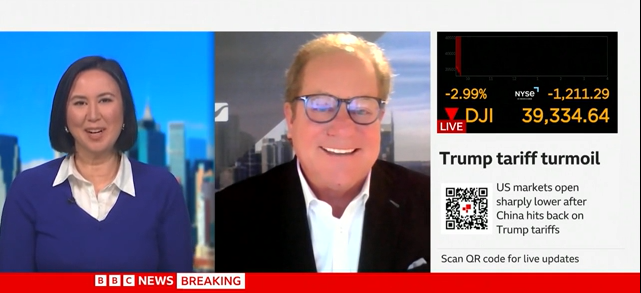Economic Fundamentals Remain Strong Despite Inflation Concerns
March 6, 2022
Tim Pagliara, a noted analyst, emphasizes the importance of valuation, dividends, and liquidity for investors, while also highlighting specific stocks with great value.
Interviewer 1 (Speaker 1):
Tim, I want to start with you because yesterday we did see the S&P 500 actually touch levels last seen in May of 2021. What's an investor to do right now? Where does an investor run?
Tim Pagliara (Speaker 2):
Well, I think they focus on valuation dividends and then having cash for their investment needs and liquidity. Those are the main things right now. And we're finding some great value still out in the market. A lot of these stocks that have dropped 75%, they're still in a territory we're not sure what their earnings prospects are going forward, so we're staying with some really basic companies.
Top Value Picks for Current Market Conditions
Interviewer 2 (Speaker 3):
Can you walk us through some of the names there? Name some names. Where are you seeing value right now?
Tim Pagliara:
Well, D.R Horton is one of our favorite picks. They'll make a little over $12 a share—
Interviewer 1:
This is the homebuilder.
Tim Pagliara:
Homebuilder. Largest homebuilder in the United States. 65% of their homes are between $250,000 and $500,000. The average, which is a great entry point for first-time home buyers, and we're short 5 million homes in the country. There's also a move on to recapitalize Fannie Mae and Freddie Mac so that they can extend more credit and make it easier for home buyers to get into that first-time home. They've been in conservatorship for 13 years, making it very difficult for average people to get financing. They do $6 billion of the $12 trillion mortgage market.
H2: Small-Cap Stocks and the Risk of Stagflation
Interviewer 1:
Hey, Gina Martin Adams, come on in here, Chief Equity Analyst at Bloomberg Intelligence. You have a new note out today focusing on small-caps, the Russell 2000, but you have kind of a scary word, I think, to a lot of people in the headline there, the S word, stagflation. Take us into it.
Gina Martin Adams (Speaker 4):
Well, our view still is that small-caps are incredibly cheap relative to large-cap stocks and should weather the storm this year very well as a result of that, especially if they can get a little bit of a revenue uplift in comparison to their large-cap brethren who are more exposed to weaknesses geopolitically and in Europe. That said, there is growing consensus that is a bit more concerned about stagflation. So we introduced a stagflationary scenario into our models. I give it a less than 5% probability of occurring, but if we do have stagflation emerge, we would anticipate that inflation stays extremely high. Oil prices stay extremely high over a period of years, not just months or even weeks as it were so far this year. Nonetheless, if oil prices stay high, commodity prices at large stay high, and growth takes a material downdraft, then we introduce that stagflationary scenario, which does imply significantly greater weakness for small-caps as well as broader global equity markets.
Federal Reserve's Role in Combating Stagflation
Interviewer 2:
And when it comes to stagflation, which is a very scary word, people think of the 70s, the 80s, long lines at gas stations.
Interviewer 1:
You remember that, Katie, right?
Interviewer 2:
I remember that very well. But what can the Fed do here? What's in its toolkit? And if the Fed isn't able to do anything, how do equity markets behave in that scenario?
Gina Martin Adams:
So the Fed does have tools at their disposal. Let's just consider the fact that the Fed is still extremely easy, balance sheet's still expanding, just getting set to finally stop expanding, and they're just embarking on interest rate tightening. Our base case scenario implies that the Fed does tighten at least four times, more likely five times over the course of the next year, and ultimately does allow some balance sheet runoff. That in and of itself should constrain demand a little bit at least, which results in a slightly slower demand growth, which does contain inflation to a certain degree. So part of the reason why the stagflationary risk or the fears around stagflation are rising is because the Fed is behind the curve. The fact that they do embark upon a tightening cycle to catch up to economic reality and at least put a lid on what has been extraordinary demand growth and extraordinary growth, they can battle that demand side. They also can battle the general price dynamics in the commodity markets. Recall prior to the crisis erupting in Ukraine and Russia, we did see commodity prices surging. And part of the reason for that surge, you would have to argue, was liquidity conditions. Liquidity conditions supporting not just stocks, which are usually the first thing that everyone thinks about when they think about the Fed balance sheet, but all forms of risk assets to the degree that the Fed normalizes that balance sheet, takes a little bit of liquidity out of the system, we could see prices come under some degree of control as well. So, I take issue with this idea that the Fed can't do anything. I think they still can do a lot of things. The market is concerned about growth, but perhaps a little overly concerned about growth just considering how steady demand growth has been.
Interviewer 1:
Well, we certainly imagine the Fed doing things today as they kick off their two-day policy meeting. We are going to hear from Fed chair Jay Powell tomorrow. I expect a lot of questions, not just about rising commodity costs, but also, of course, Russia's invasion of Ukraine and to what extent that could affect supply chains and inflation.
IBM as a Strategic Investment in Today’s Market
Tim, come back in here, and speaking of the 1970s, I want to talk about a company that was pretty old in the 1970s: IBM. It's another one of your picks. So more than 100 years old. This company has gone through many different iterations and transformations, right now, increasingly focused on the cloud. Why are you optimistic about IBM as a pick?
Tim Pagliara:
Well, I think the inflation that we're talking about is going to focus companies on reducing costs. Cloud expense is well over $100 million for a lot of publicly traded companies. And IBM's hybrid model focuses on containing costs, and I think it will gather momentum. And the next leg in this cloud computing is going to be some price competition and ways for companies to reduce those costs. So we like it. It's got a 5%-plus dividend yield, it's a below-market multiple, and we think they're going to make this transition very well.













